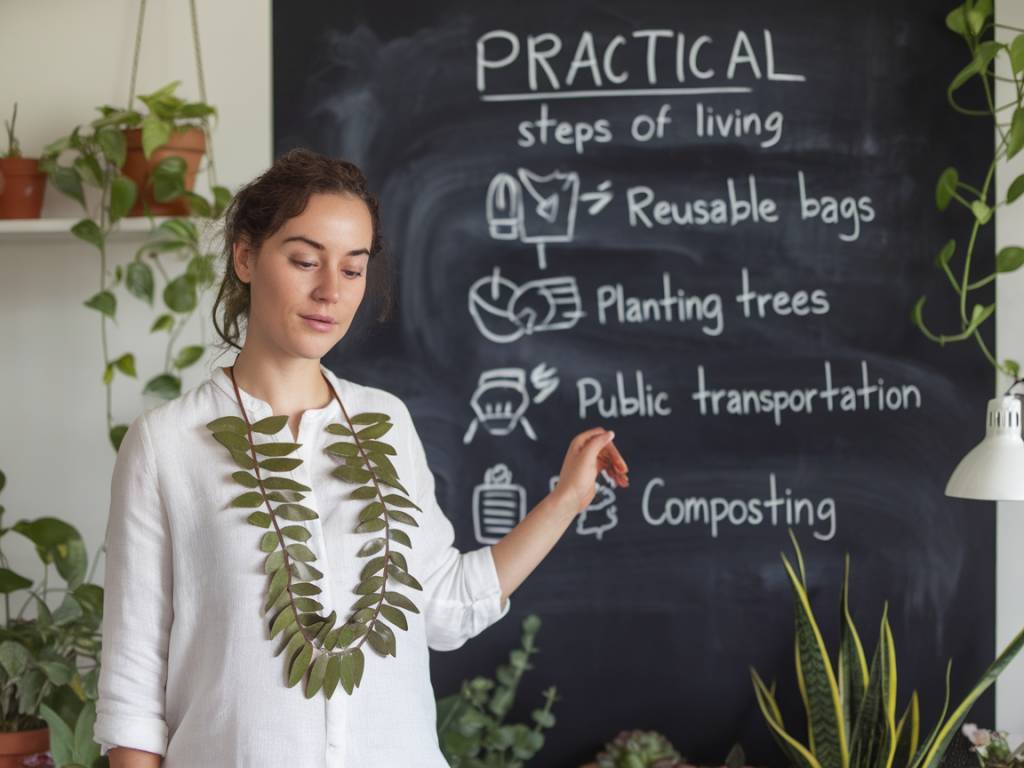Why Sustainable Living Doesn’t Have to Mean Sacrifices
If you’ve been putting off sustainable living because it sounds like a ton of effort or you fear it might force you to renounce the comforts of modern life, think again. Sustainable living doesn’t have to be a synonym for sacrifice. In fact, it’s often about smarter choices that improve your quality of life while benefiting the environment. So, how can we incorporate sustainability into our daily lives without overhauling everything? Let’s dive into the practicalities.
Start Small, Aim Big
Transitioning to sustainable living doesn’t require a dramatic lifestyle makeover. Often, it’s the small, manageable changes that accumulate into a meaningful impact. Think about it: Would you rather ditch cars completely or start with using public transport a few times a week?
Here are a few simple steps you can take:
- Choose reusable alternatives: Replace single-use items like plastic water bottles and bags with reusable ones. These small changes save money and reduce waste.
- Conserve energy where possible: Turn off lights when not in use, unplug electronics, and consider switching to LED bulbs. This isn’t just good for the planet—it’s good for your electricity bill too.
- Switch to a plant-based day: Dedicate one or two days a week to plant-based meals. Reducing meat consumption just a little bit can significantly lower your carbon footprint.
Each small action is a step toward a more sustainable future—no overwhelming commitments required.
Invest in Energy-Efficient Solutions
Energy efficiency isn’t just reserved for businesses or large-scale industries. Homeowners can also make smarter choices to save both energy and money. For example:
- Upgrade to energy-efficient appliances: Look for appliances with an Energy Star rating. While they might cost more upfront, the savings on energy bills over time are worth it.
- Insulate your home: Proper insulation can prevent heat loss in winter and keep your home cool during summer, reducing your dependence on heating and cooling systems.
- Consider renewable energy sources: If you own your home, installing solar panels can be an excellent long-term investment. For renters, exploring green energy plans with your local utility provider is another option.
Energy efficiency not only aligns with sustainable living goals but also provides tangible financial benefits.
Rethink Your Transportation Choices
The way we get from point A to point B has a direct impact on the environment. But sustainable transportation doesn’t mean ditching your car immediately. Instead, try a balanced approach:
- Embrace public transport or carpooling: Reducing the number of vehicles on the road can significantly cut emissions.
- Explore active transportation: Walking or cycling is a win-win solution for both the planet and your health.
- Switch to electric vehicles: If you’re considering buying a new car, explore electric or hybrid options. They’ve become increasingly affordable and practical.
Sustainable transportation can blend seamlessly into your lifestyle without compromise—and often leads to side benefits like reduced costs and better fitness.
Shop Smarter, Not Harder
Do you know what’s one of the easiest ways to live more sustainably? Change how you shop. Yes, your purchasing habits can significantly influence your carbon footprint. Here are some tips:
- Support local businesses: By buying locally-produced goods, you reduce the energy required for transportation and support your community at the same time.
- Look for quality, not quantity: Instead of buying fast fashion, opt for durable, high-quality clothing. It lasts longer and creates less waste.
- Go for eco-friendly labels: Whether it’s groceries, cleaning products, or skincare, look for brands that focus on sustainable practices.
- Plan meals and avoid food waste: About one-third of all food produced is wasted. Reduce your contribution to this by planning your meals and buying only what you need.
Mindful shopping doesn’t just cut down on waste. It also encourages brands and businesses to adopt more sustainable practices in response to consumer demand.
Adopt a Minimalist Mindset
Sustainable living goes hand-in-hand with minimalism. This doesn’t mean decluttering your entire house overnight. Instead, focus on using what you already have and reconsidering whether you truly need that next purchase:
- Prioritize functionality: Does that new gadget solve a genuine problem, or is it another fleeting trend?
- Repurpose and repair: Before throwing something away, think about whether it can be fixed or given a new purpose.
- Donate what you don’t need: Items gathering dust in your home might be exactly what someone else needs.
Lesser stuff doesn’t mean lesser joy. In fact, a simpler life often translates to less stress and more focus on what truly matters.
Engage with Your Community
Sustainability isn’t just about personal choices—it’s about collective effort. Communities that work together toward sustainable solutions often see the greatest impact. Here’s how you can get involved:
- Join local initiatives: Participate in tree planting events, community clean-ups, or educational workshops focused on sustainability.
- Advocate and educate: Share your knowledge with friends and family to encourage them to embrace sustainable habits.
- Support green policies: Stay informed about local policies and initiatives promoting renewable energy, waste management, or eco-friendly infrastructure development.
When we act as a community, our individual efforts multiply, driving positive change on a larger scale.
Sustainable Living Is a Journey
There’s a misconception that sustainable living has to be « all or nothing, » but that couldn’t be further from the truth. Every step, no matter how small, contributes to the larger goal of preserving our planet. By making conscious choices, investing in quality over quantity, and collaborating with others, you can lead a sustainable life without ever feeling like you’re missing out.
So, what will you change today? The future of sustainability isn’t just in big, bold moves—it’s in the sum of the small, intentional actions we all take. Let’s build that future, one step at a time.
